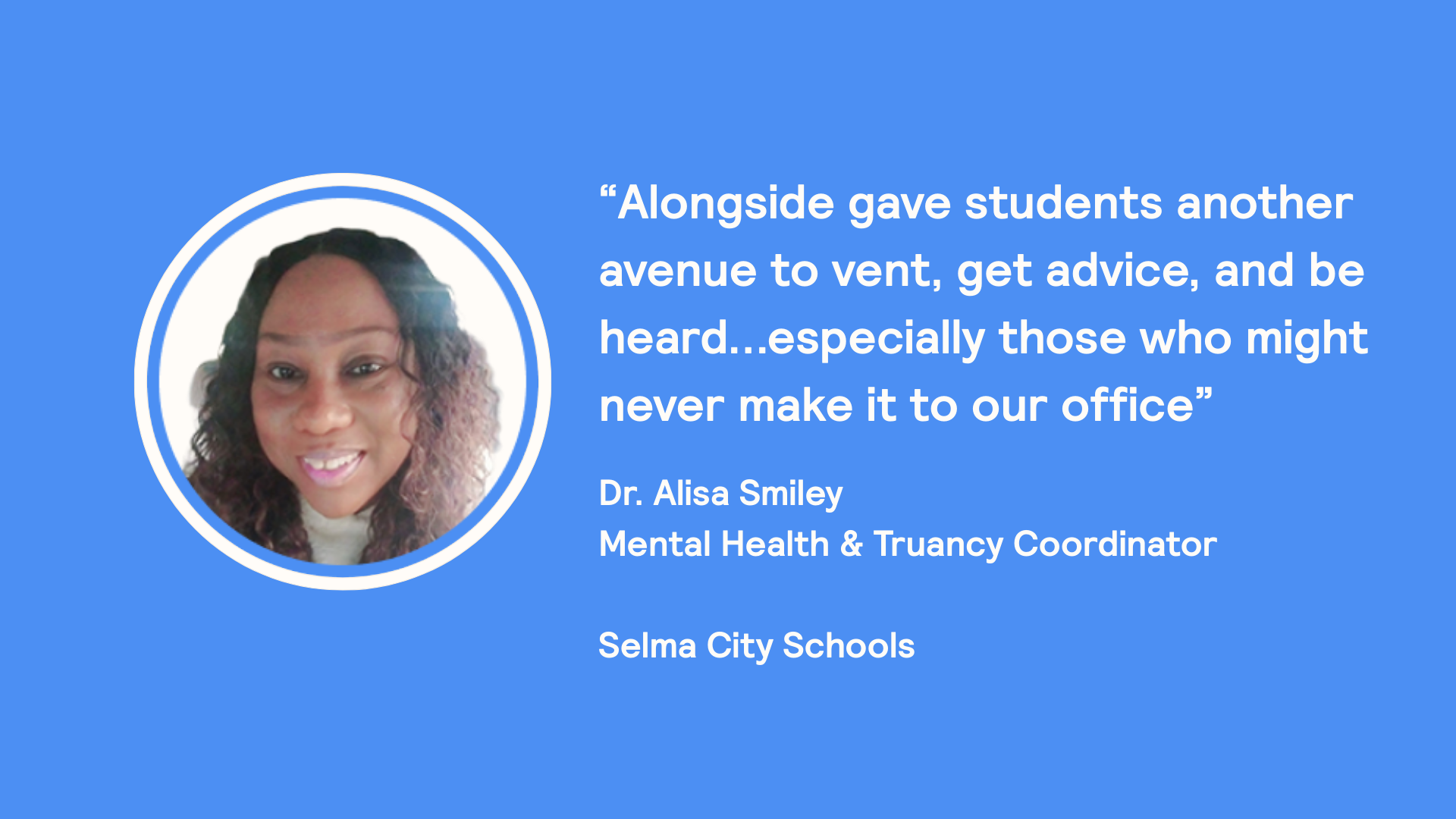

In the realm of student mental health, one statistic is particularly alarming: nationwide, schools typically only reach about 15% of their student population with mental health support. Chelsea Public Schools, however, is taking proactive steps to change that. By implementing Alongside into its holistic community-focused approach to supporting mental health, the urban district just outside Boston, MA, has dramatically broadened its reach, providing instant feedback and support to all students, regardless of their background or language.
Empowering Students with Instant Support
Brenda Peña, the Director of Social Work, SEL & Specialized Student Supports at Chelsea Public Schools, highlights how Alongside has transformed the way students receive support. “From a classroom perspective, (Alongside) can provide instant feedback and support to all students and teachers,” Peña explains. She appreciates how this tool helps to foster engagement and motivation by meeting students where they are.
Alongside also plays a crucial role in creating a more inclusive environment. “With support for over 60 different languages, it helps ensure that we reach all our learners effectively,” Peña adds.
Family Engagement: A District-Wide Effort
The success of Alongside in Chelsea Public Schools is not just due to its innovative technology; it’s also the result of a district-wide effort to engage families. Communication with families has been a cornerstone of the implementation process. Peña notes, “Alongside is a team effort district-wide. Communication with families is crucial, and we've shared information about Alongside with our entire community.”
Chelsea Public Schools has a robust social-emotional learning (SEL) initiative, and Alongside fits seamlessly into this framework. “Our SEL leads have been proactive in introducing Alongside from a classroom perspective, allowing our social workers and school counselors to focus on tier two and tier three support,” says Peña.
Ensuring that staff members understand and use Alongside has been key to its success. Peña explains, “By introducing it to adults first and gaining district-wide support, we have been able to effectively pass it on to students and families. This strategy has proven successful in our district.”
Clark Ave Middle School: A Model for Success
Chelsea’s Clark Ave Middle School is a shining example of how Alongside can be used to support a large and diverse student body. With approximately 600 students, the school has seen remarkable engagement with the app. Peña shares, “80% of our students have used Alongside, with 550 actively using it and 387 repeatedly using it. They've engaged in over 5,000 activities, including goal setting, journaling ,and watching videos on coping strategies.”
The chatbot feature, used by 69% of students, has been particularly popular. Despite the initial apprehension some students may have about interacting with a chatbot, the overall engagement is high. Peña notes, “The feedback from students has been extremely positive, with many noting how helpful it is and how they feel connected to Alongside, especially if they are not always comfortable with human interaction.”
Looking ahead, Chelsea Public Schools is excited to expand the use of Alongside to younger students, with Peña noting plans to begin use of the app starting in fourth grade.
Conclusion
Chelsea Public Schools’ integration of Alongside into its holistic, community-focused approach to mental health exemplifies how technology can be leveraged to provide instant, equitable support to a diverse student population. By engaging families, supporting educators, and empowering students, the district has created a model for how schools can extend their reach and meet the mental health needs of all learners.



